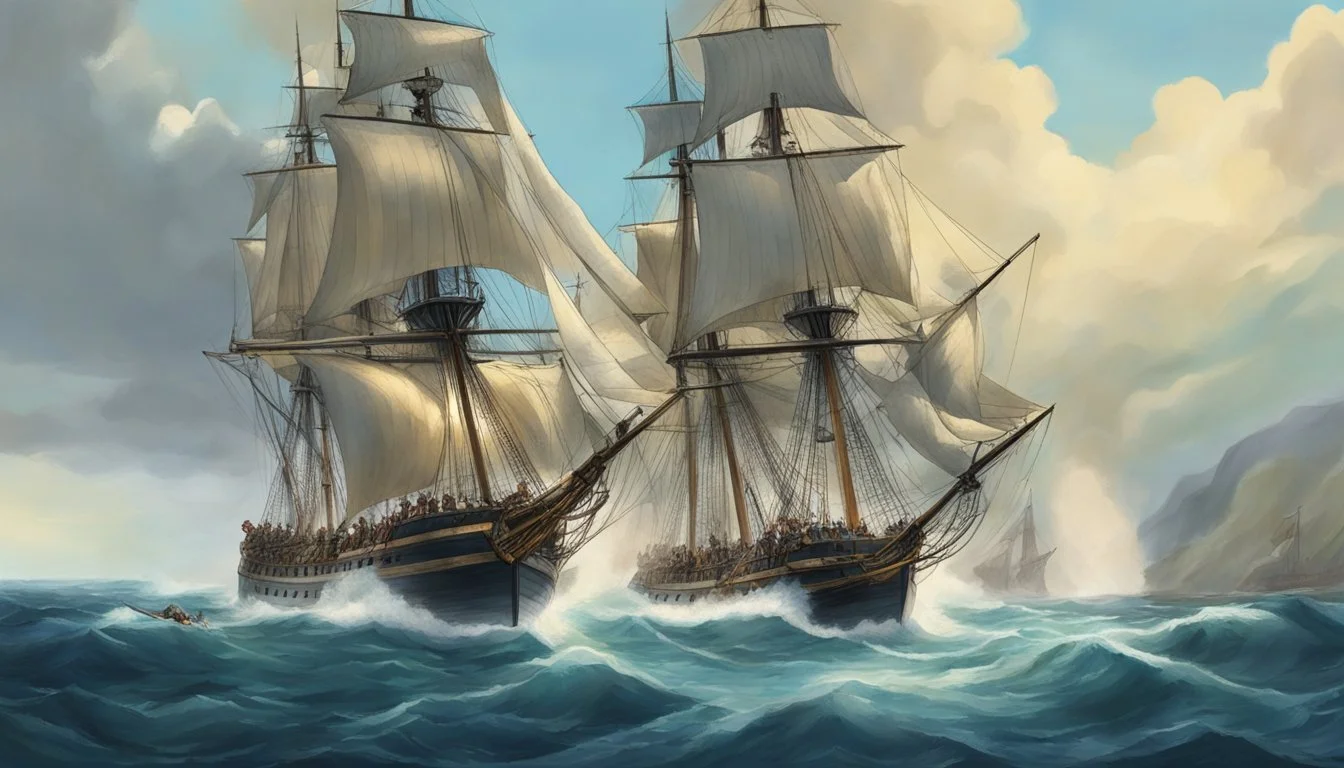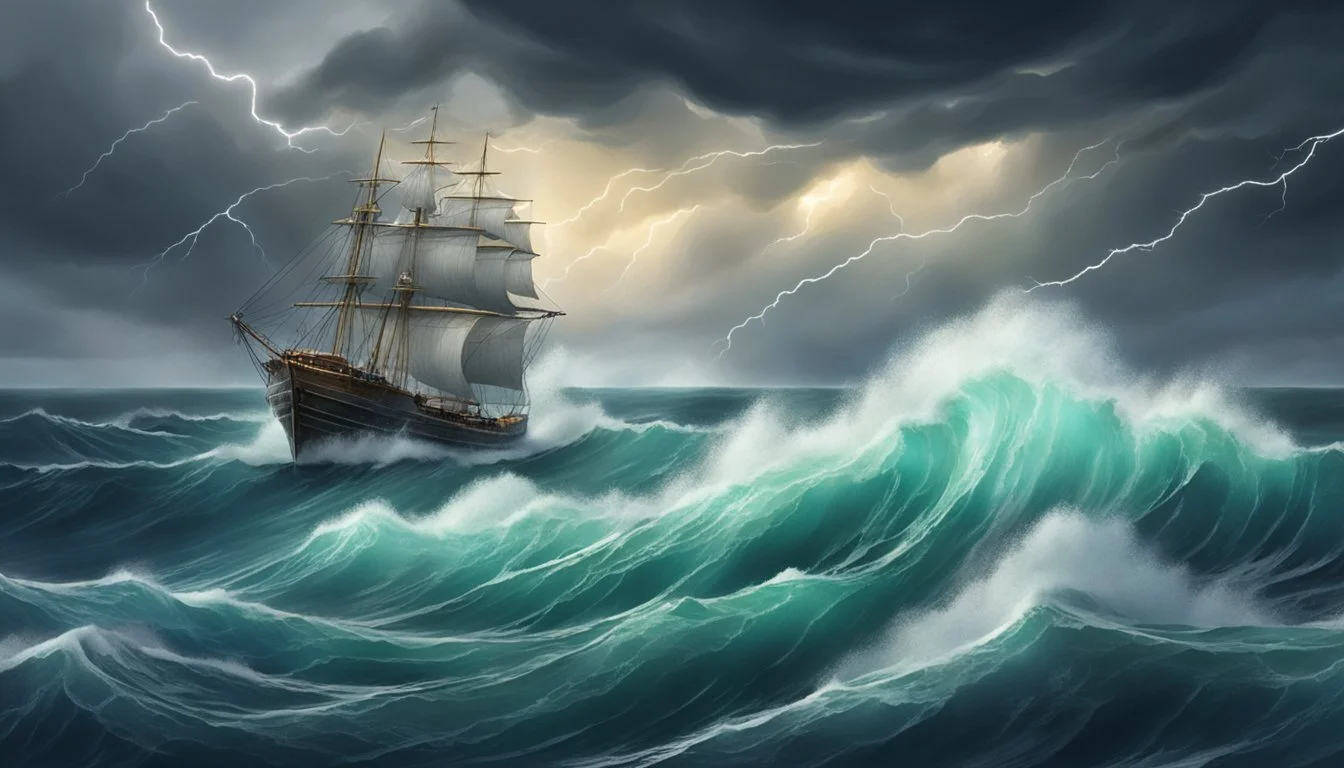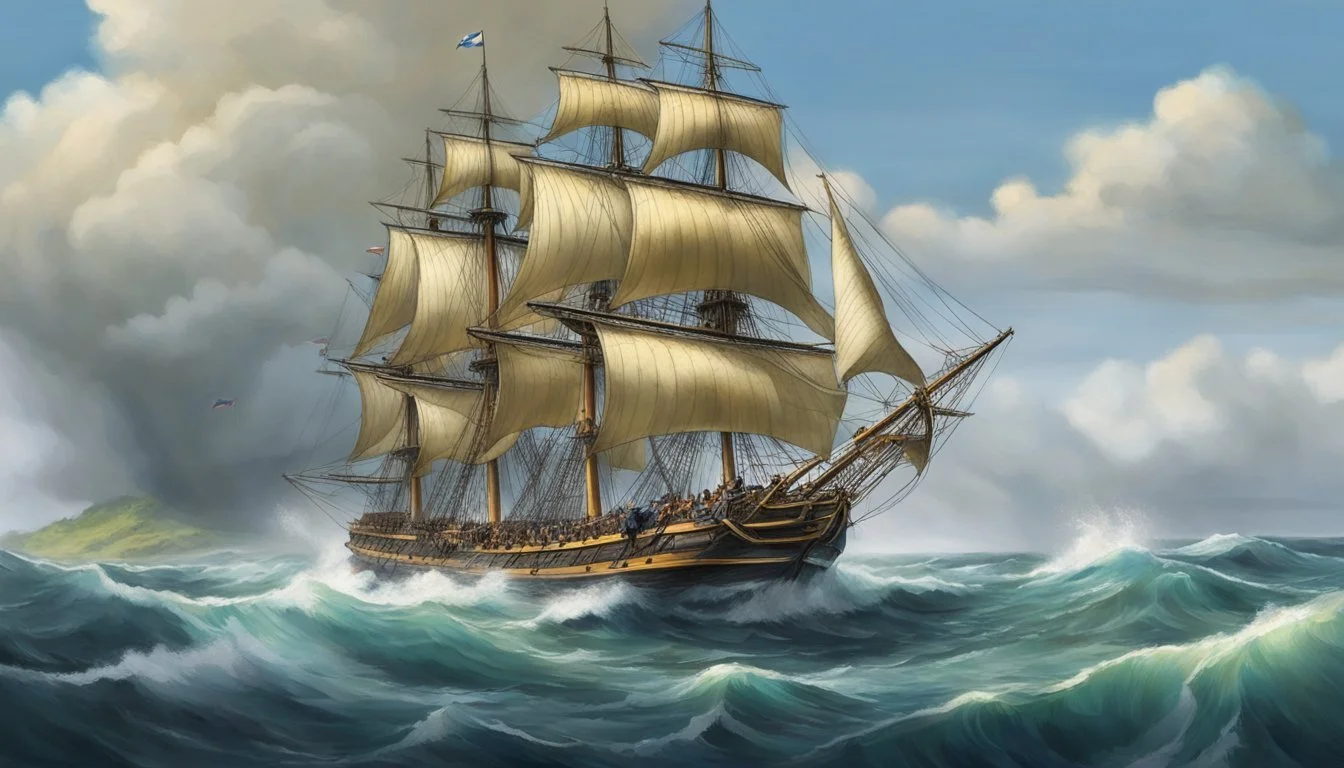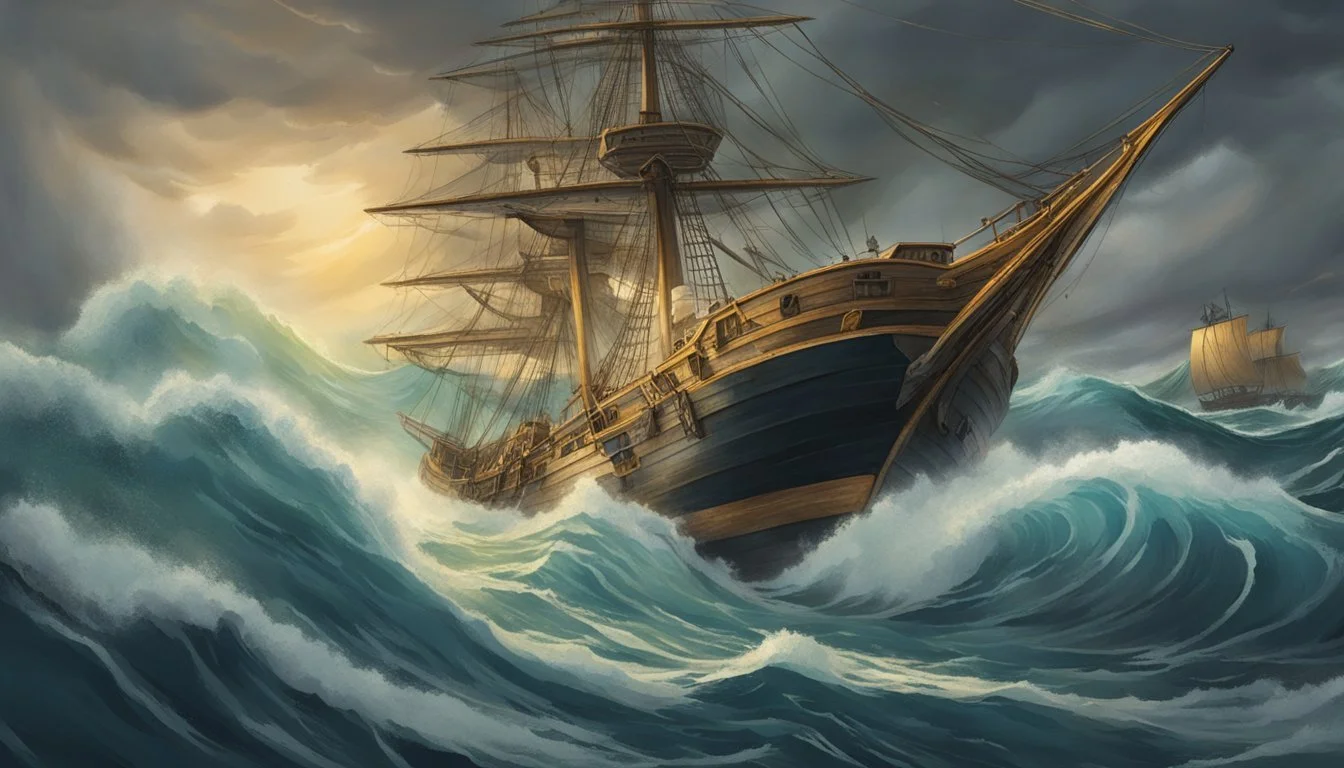The Real Mutiny: The True Events Behind The Bounty
Unveiling HMS Bounty's Historic Rebellion
The mutiny on HMS Bounty has captivated audiences for centuries, but the true story differs from popular depictions. On April 28, 1789, Fletcher Christian led a group of disaffected crew members in seizing control of the ship from Lieutenant William Bligh. The rebellion occurred near Tonga as the Bounty was returning from Tahiti with a cargo of breadfruit saplings.
Contrary to his villainous portrayal in fiction, Lieutenant Bligh was a capable naval officer who faced multiple mutinies throughout his career. After being set adrift in a small boat with 18 loyal crew members, Bligh skillfully navigated over 3,600 miles across the Pacific Ocean to safety. This remarkable feat of seamanship and survival is often overshadowed by the mutiny itself.
The causes of the mutiny were complex, involving harsh naval discipline, the allure of Tahitian life, and interpersonal conflicts. While Christian and the mutineers initially sought refuge on Tahiti, they ultimately settled on Pitcairn Island to evade British authorities. The aftermath of the mutiny had far-reaching consequences for all involved, shaping naval policies and captivating the public imagination for generations to come.
Historical Background of 'The Bounty'
The 18th century marked a pivotal era of exploration, naval dominance, and colonial expansion for Great Britain. These factors set the stage for the infamous voyage of HMS Bounty and the events that would follow.
The Golden Age of Exploration
Britain's maritime endeavors flourished during this period. Expeditions sought new lands, trade routes, and scientific discoveries. The Royal Society sponsored voyages to observe astronomical events and map uncharted territories.
James Cook's expeditions to the Pacific Ocean from 1768 to 1779 were groundbreaking. He charted New Zealand, explored Australia's eastern coast, and made first European contact with Hawaii.
These voyages expanded geographical knowledge and sparked interest in Pacific islands. They also paved the way for future expeditions, including that of the Bounty.
British Naval Power in the 18th Century
The Royal Navy emerged as a dominant force on the world's oceans. It played a crucial role in Britain's imperial ambitions and global trade networks.
Naval technology advanced rapidly. Improved ship designs, navigation tools, and weaponry enhanced maritime capabilities.
The navy's size and strength grew significantly. By 1789, it boasted over 300 ships and 70,000 sailors.
This naval supremacy allowed Britain to project power globally and protect its expanding colonial interests.
Colonization and Sea Voyages
Britain's colonial empire expanded dramatically during this era. Settlements in North America, the Caribbean, and India grew in importance.
Sea voyages were essential for maintaining and expanding this empire. Ships transported goods, settlers, and military forces across vast distances.
The search for valuable resources drove many expeditions. Spices, timber, and exotic plants were highly sought after.
The Bounty's mission to transport breadfruit plants from Tahiti to the West Indies exemplified this quest for valuable resources. It aimed to provide cheap food for slaves on Caribbean plantations.
Chronology of the Bounty Expedition
The HMS Bounty's journey unfolded over several key phases, from its initial mission to the fateful mutiny. Each stage played a crucial role in shaping the expedition's ultimate outcome.
The Mission's Inception
In 1787, the British Admiralty commissioned HMS Bounty for a special mission. The ship was tasked with collecting breadfruit plants from Tahiti and transporting them to the West Indies. This endeavor aimed to provide a cheap food source for enslaved workers on British plantations.
Lieutenant William Bligh was appointed as the Bounty's commander. He selected a crew of 46 men, including Fletcher Christian as Master's Mate. The ship underwent modifications to accommodate the plant cargo.
On December 23, 1787, HMS Bounty set sail from Spithead, England. The expedition faced an early setback when bad weather forced them to regroup at Tenerife in the Canary Islands.
Journey to Tahiti
The Bounty's voyage to Tahiti was long and challenging. After departing Tenerife, the ship sailed south along the African coast. They attempted to round Cape Horn but were thwarted by severe storms.
Bligh made the decision to change course. The Bounty instead traveled east, crossing the Indian Ocean and passing south of Australia. This detour added months to their journey.
On October 26, 1788, after ten months at sea, the Bounty finally reached Tahiti. The crew was exhausted from the arduous voyage, but their work was far from over.
The Stay on Tahiti
The Bounty remained in Tahiti for five months. During this time, the crew collected and potted over 1,000 breadfruit plants. They also immersed themselves in Tahitian culture.
Many crewmen formed relationships with Tahitian women. They enjoyed a relaxed lifestyle, in stark contrast to the strict discipline aboard the ship. This period of relative freedom would later contribute to discontent among the crew.
Bligh maintained friendly relations with local chiefs. He organized the collection of plants and prepared the ship for its return journey. The extended stay, however, may have weakened his authority over the crew.
The Outset of Mutiny
On April 4, 1789, the Bounty departed Tahiti with its cargo of breadfruit plants. The return to naval discipline was difficult for many crewmen. Tensions began to rise between Bligh and some of his men.
Fletcher Christian, in particular, grew increasingly resentful of Bligh's leadership. He felt humiliated by the captain's harsh criticism and longed to return to Tahiti.
On April 28, 1789, just 23 days after leaving Tahiti, the situation reached a breaking point. Christian and a group of disaffected crewmen seized control of the ship in the early morning hours. The infamous Mutiny on the Bounty had begun.
Key Figures in the Mutiny
The mutiny on HMS Bounty involved several notable individuals who played crucial roles in the events that unfolded. Their actions and decisions shaped the course of this infamous maritime incident.
Captain William Bligh
William Bligh was the commanding officer of HMS Bounty during its ill-fated voyage. A skilled navigator, Bligh had previously served under Captain James Cook. He was known for his strict disciplinary style and abrasive personality.
Bligh's leadership came under scrutiny after the mutiny. He was set adrift in a small boat with 18 loyal crew members. Despite the odds, Bligh successfully navigated the boat over 3,500 nautical miles to safety in Timor.
After returning to England, Bligh faced a court-martial but was acquitted of any wrongdoing in the loss of his ship. He continued his naval career, eventually rising to the rank of Vice Admiral.
Fletcher Christian
Fletcher Christian was the master's mate on the Bounty and the leader of the mutiny. He had sailed with Bligh on previous voyages and was initially considered a trusted officer.
Christian's motivations for leading the mutiny remain debated. Some accounts suggest he was driven by harsh treatment from Bligh, while others point to his desire to return to Tahiti.
After the mutiny, Christian led a group of mutineers to settle on Pitcairn Island. His fate remains uncertain, with conflicting reports about his death on the island.
Other Crew Members
The Bounty's crew played various roles during the mutiny:
John Fryer: The ship's master, who remained loyal to Bligh
Peter Heywood: A young midshipman who stayed on the Bounty but claimed he was not part of the mutiny
John Adams: A able seaman who joined the mutineers and later became a community leader on Pitcairn Island
Some crew members faced trials upon return to England. Their testimonies provided valuable insights into the events surrounding the mutiny.
The Mutiny Unfolds
The mutiny on HMS Bounty erupted suddenly on April 28, 1789, after months of mounting tensions. It involved a swift takeover of the ship and resulted in long-lasting consequences for all involved.
The Initial Rebellion
Fletcher Christian, the master's mate, led the uprising against Captain William Bligh. In the early morning hours, Christian and a group of disgruntled crewmen entered Bligh's cabin. They forcibly seized the captain, binding his hands behind his back.
The mutineers' grievances included harsh discipline, accusations of theft, and a desire to return to Tahiti. Bligh, known for his strict management style, had clashed with crew members throughout the voyage.
Several loyal officers were also confined during this initial phase of the rebellion.
Seizing the Ship
With Bligh restrained, Christian and his supporters quickly took control of the Bounty. They armed themselves and rounded up any crew members suspected of loyalty to the captain.
The mutineers faced little resistance, as many sailors were caught off guard or chose not to intervene. Some joined the rebellion willingly, while others were coerced or remained neutral.
Christian assumed command of the vessel, directing its course back toward Tahiti. The ship's small cutter was prepared for launching.
Aftermath and Retribution
Bligh and 18 loyal crew members were set adrift in the ship's launch, a 23-foot open boat. Surprisingly, they managed to navigate over 3,600 miles to safety in Timor after a 47-day journey.
The mutineers initially returned to Tahiti. Some remained there, while Christian and eight others sailed to Pitcairn Island, seeking refuge from British justice.
The Admiralty dispatched HMS Pandora to hunt down the mutineers. Several were captured in Tahiti and faced court-martial. Three were hanged, while others received lesser punishments or acquittals.
Christian and his group established a settlement on Pitcairn, living in isolation for years. Their descendants still inhabit the island today.
Survival and Navigation
The mutiny on the Bounty led to two parallel tales of survival and navigation. Lieutenant Bligh and his loyal crew embarked on a remarkable journey across open ocean, while the mutineers sought refuge on remote islands.
Bligh's Journey Home
Lieutenant William Bligh and 18 loyal crew members were cast adrift in a 23-foot open launch boat. They faced a daunting 3,618-mile voyage across the Pacific Ocean to reach safety. Bligh's exceptional navigational skills and leadership proved crucial to their survival.
The small boat was dangerously overloaded and had limited supplies. Bligh rationed food and water carefully, allowing only an ounce of bread and quarter-pint of water per man daily. He navigated using a pocket watch and a sextant, relying on his memory for charts.
Despite encounters with hostile natives and treacherous reefs, Bligh successfully guided the boat to Timor after 47 days at sea. Only one man died during the journey, a testament to Bligh's seamanship.
Mutineers' Escape and Hideout
Fletcher Christian and the mutineers initially sailed to Tahiti. Some chose to remain there, while Christian and eight others sought a more secure hideout. They took several Tahitians with them and eventually discovered Pitcairn Island.
The mutineers deliberately misidentified Pitcairn's location on maps to avoid detection. They burned and sank the Bounty to eliminate evidence of their presence. On Pitcairn, they established a small colony, dividing land and Tahitian women among themselves.
Isolation and internal conflicts plagued the settlers. By 1808, when an American whaling ship discovered the colony, only one mutineer, John Adams, remained alive. The community survived, however, and Pitcairn Island remains inhabited by descendants of the mutineers to this day.
Cultural Depictions and Myths
The Bounty mutiny has captured public imagination for centuries, spawning numerous artistic interpretations and popular misconceptions. Its dramatic tale has been retold through various media, often blending fact with fiction.
Literature and Art
Herman Melville's "Billy Budd" drew inspiration from the Bounty mutiny, exploring themes of authority and rebellion at sea. Numerous paintings depicted the event, with John Singleton Copley's "The Mutineers Turning Lieutenant Bligh and Part of the Officers and Crew Adrift from His Majesty's Ship Bounty" (1790) being a notable example.
William Hodges, the official artist on Cook's second voyage, created sketches of Tahiti that later influenced popular imagery of the mutiny's setting. These artistic interpretations helped shape the public's visual understanding of the event and its exotic location.
Film Adaptations
Hollywood has produced several film adaptations of the Bounty story. The 1935 version starring Clark Gable and Charles Laughton set the tone for future depictions. It portrayed Captain Bligh as a cruel tyrant and Fletcher Christian as a romantic hero.
The 1962 remake with Marlon Brando and Trevor Howard further cemented these characterizations in popular culture. "The Bounty" (1984), starring Mel Gibson and Anthony Hopkins, attempted a more balanced portrayal of the main characters.
These films, while entertaining, often prioritized drama over historical accuracy. They significantly influenced public perception of the event and its key figures.
Popular Misconceptions
Many misconceptions about the Bounty mutiny persist in popular culture. One common myth is that Captain Bligh was universally despised by his crew. In reality, only a portion of the crew mutinied, and Bligh's leadership during the open-boat voyage was remarkable.
Another misconception is that the mutineers found paradise on Pitcairn Island. The truth was far grimmer, with violence and hardship plaguing the settlers. The romanticized notion of escaping to a tropical paradise often overshadows the harsh realities faced by the mutineers.
The idea that the mutiny was primarily motivated by the crew's desire to return to Tahitian women is also oversimplified. While this played a role, the reasons for the mutiny were more complex, involving issues of command, discipline, and the harsh realities of naval life.
Impact on Naval Discipline
The Bounty mutiny sparked significant changes in Royal Navy practices. It led to a reevaluation of command structures and the implementation of new regulations aimed at preventing future rebellions.
Changes in Command Style
Naval officers began adopting less harsh disciplinary methods after the Bounty incident. Captains were encouraged to balance authority with crew welfare. The practice of "starting" - beating sailors to urge them to work faster - was officially abolished in 1809.
Physical punishments became less frequent. Officers focused more on maintaining morale through fair treatment and better living conditions. This shift aimed to reduce tension between commanders and their crews.
Influence on Naval Regulations
The Admiralty introduced new rules to address issues highlighted by the Bounty mutiny. Stricter oversight of captains' conduct was implemented. Regular inspections of ships became mandatory to ensure proper treatment of sailors.
Improved record-keeping practices were established. Logs now had to detail all disciplinary actions and their justifications. This increased accountability for officers and provided a paper trail in case of disputes.
Regulations regarding shore leave and rest periods were revised. The Navy recognized the importance of crew morale in maintaining discipline. These changes helped create a more balanced and effective naval force.
Modern Retrospectives
Recent scholarship has reexamined the Bounty mutiny, challenging traditional narratives and offering new insights. Historians and researchers have applied modern analytical techniques to uncover nuanced perspectives on the events and their aftermath.
Scholarly Analyses
Academic studies have focused on the complex social dynamics aboard the Bounty. Researchers have analyzed crew logs, court records, and personal correspondence to paint a more comprehensive picture of life on the ship.
Some scholars argue that cultural misunderstandings between British sailors and Tahitian islanders played a significant role in the mutiny. They suggest that the extended stay in Tahiti created tensions that Bligh struggled to manage upon resuming the voyage.
Anthropologists have studied the impact of the mutiny on Pitcairn Island's inhabitants, tracing genetic and cultural influences to the present day.
Revisionist Viewpoints
Several historians have reassessed Captain Bligh's leadership, arguing that his actions were largely in line with naval standards of the time. These revisionist accounts emphasize Bligh's navigational skills and survival expertise during the open-boat journey after the mutiny.
Some writers have portrayed Fletcher Christian more critically, questioning his motives and decision-making. These accounts suggest that personal conflicts and romantic entanglements, rather than tyrannical leadership, may have been the primary catalysts for the mutiny.
Recent books and documentaries have explored the lives of lesser-known crew members, providing fresh perspectives on the mutiny's causes and consequences.
Conclusion
The mutiny on HMS Bounty remains one of the most infamous events in naval history. It highlights the complexities of human relationships and power dynamics in isolated environments.
The true story differs from popular depictions. Lieutenant William Bligh was not the cruel tyrant often portrayed. Fletcher Christian's motivations were likely more nuanced than simple rebellion against authority.
The aftermath had far-reaching consequences. It led to multiple expeditions, trials, and colonization of remote islands. The event continues to captivate audiences centuries later.
Examining primary sources and historical records provides a more balanced view of the incident. It reveals the challenges of 18th-century naval life and the impact of cultural clashes in the Pacific.
The Bounty mutiny serves as a cautionary tale about leadership, loyalty, and the effects of prolonged isolation at sea. It demonstrates how seemingly small conflicts can escalate into life-altering events.
This historical episode continues to offer valuable insights into human behavior under extreme circumstances. It prompts reflection on the nature of authority, justice, and the pursuit of personal freedom.







